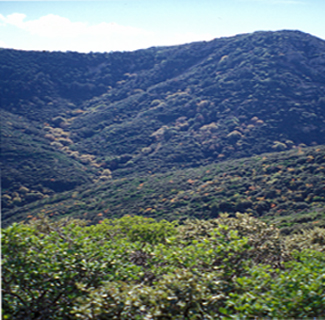Climate change and drought: a threat for Mediterranean ecosystem

A six-year (1999–2005) experiment of drought manipulation was conducted in a Quercus ilex Mediterranean forest (Southern Catalonia) to simulate predicted climatic conditions projected for the decades to come. In previous studies, we observed that drought decreased the activity of some soil enzymes, including acid and alkaline phosphatases, in some seasons and at particular soil depths, whereas there were no effects in other seasons and soil depths. We also found that drought affected P in some soil fractions but not the overall P soil stocks.
These results highlighted that it was important to gain knowledge on the relation between the changes in the activity of phosphatases on the one side and the changes in soil P stocks and availability, soil organic matter and soil moisture, on the other side, since drought may have a direct effect on soil phosphatase activity by changing soil water availability or an indirect effect by changing soil organic matter, short-term available-P, soil C/P ratio or other soil traits. We thus conducted a new experiment with the aim to respond to the following questions: (i) what are the effects of the drought predicted for the next decades by climatic and ecophysiological models on the activity of soil phosphatases and on soil P content? (ii) How do the possible changes in soil phosphatase relate to the changes in litter, soil organic matter and total soil-P and extractable P fractions (immediately available-P and short-termavailable-P)? and (iii) What is the seasonality of those effects and those relationships?.
Drought reduced acid phosphatase activity in soil in all seasons, including summer and winter, the seasons with less biological activity due to water and cold stress. Reductions of soil water content between 13 and 29% reduced soil acid phosphatase activity between 22 and 27% depending on the season. Drought reduced alkaline phosphatase activity (by 28%) only in winter. Soil acid and alkaline phosphatase activities were positively correlated with soil water content in all seasons. In contrast short-term available-P which increased under drought in several seasons was weakly correlated with soil phosphatase activities. As a result, immediately/short-term available-P concentration ratios decreased in all the seasons (between 10 and 71%). Drought increased foliar P concentration and reduced the C/P concentration ratio in litter fall and also decreased the ratio between organic C and short-term available-P in soil.
These effects of drought have several consequences and implications: (i) soil phosphatase activity is more dependent on the direct changes in soil water content than on the indirect changes in its substrate, short-term available-P, as indirect consequence of drought, (ii) the effects of drought decreasing soil phosphatase activity may be significant in any season if there is a decrease in soil water content, (iii) there is an accumulation of short-term available-P in soil that increases potential P losses by leaching and erosion during the torrential rainfalls typical of the Mediterranean climate, (iv) there is a reduction in the P available to plant capture, and (v) there is a change in soil C:P stoichiometry with the corresponding implications for soil trophic chains.
References
Sardans J., Peñuelas J., Ogaya R. 2008. Experimental drought reduced acid and alkaline phosphatase activity and increased organic extractable P in soil in a Quercus ilex Mediterranean forest. European Journal of Soil Biology 44: 509-520.

